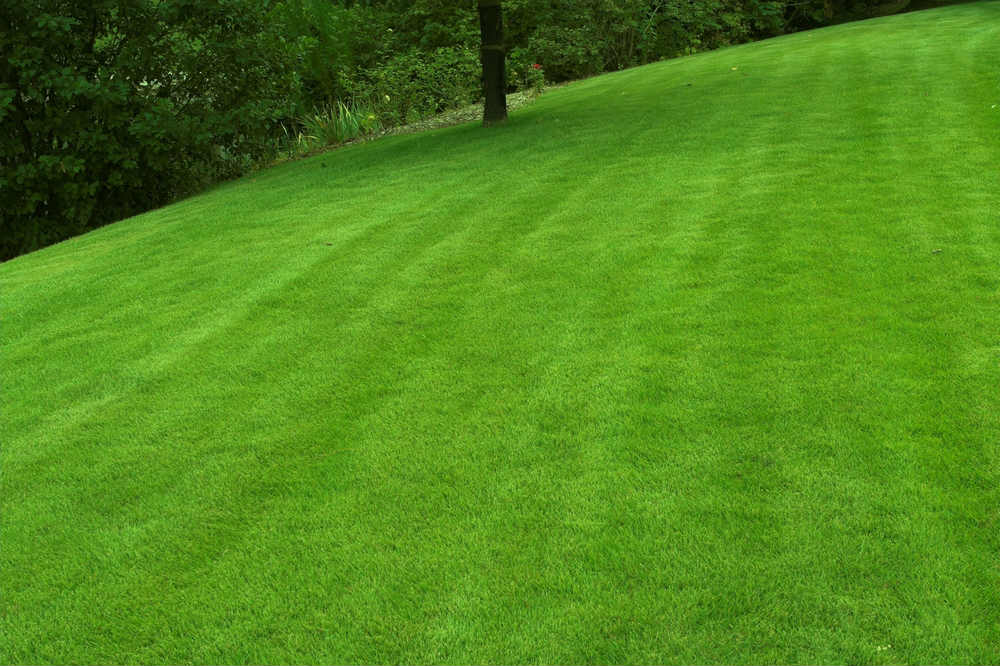
If your home has a sloping garden, you’re not alone. As many as 39% of gardens in the UK are sloped, which can make upkeep a little tricky.
It’s understandable to be nervous about maintaining your garden on a slope, but there are several techniques to make this kind of garden work to your advantage.
For example, if you’ve always wanted a stream, a sloping garden can be the perfect environment to build one. If your home has wonderful views, then a sloping garden will allow you to enjoy them that little bit more, especially if it’s well designed.
In this article, we explore a few of these exciting design ideas, including decking ideas for sloping gardens, and provide some tips on how best to maintain your sloping garden come rain or shine.
Build raised garden layers
One of the easiest ways to landscape your sloping garden is to opt for different heights and shades of green when selecting plants. Using different shades of green is a clever way to disguise steep inclines, especially if you have some eye-catching elements in your garden like rockeries, statues and water features.
By planting a variety of heights, from shrubs to trees, your sloping garden will quickly transform into an exciting space the whole family will love to explore.
Maintain your soil
While a sloping garden can make planting a challenge, many hobby gardeners fail to pay close enough attention to the soil when maintaining their sloped garden. If your flower beds are at a gradient, you’ll need to watch out for erosion and water-run off, which can lead to both dehydrated and oversaturated plants. If your garden is on a particularly steep slope, soil can begin to gather at the base, leaving plants at the top of the slope exposed.
A clever way to avoid this is to build plant banks with steps in-between each, keeping soil on level ground.
Another gardening hack is to lay coarse coconut matting on the slope and plant through it, to keep your newly planted flower beds in place while roots develop.
If you’re unable to change the layout of your garden or simply don’t have the time, selecting particularly hardy plants like evergreens, geraniums and creepers is recommended.
Choosing the right plants
In the middle of winter, the base of the slope can become a real frost trap thanks to shadows cast from the house and outdoor furniture, so be sure to select plants that can cope with a dip in temperature. Some great winter-proof plants (that also flower in cooler temperatures) include pansies, cyclamen, dogwood, viburnum and heather. If you’re not sure where to start, a trip to your local garden centre would be a good idea – ask your local gardening expert to help point you in the right direction.
Decking ideas for slopes
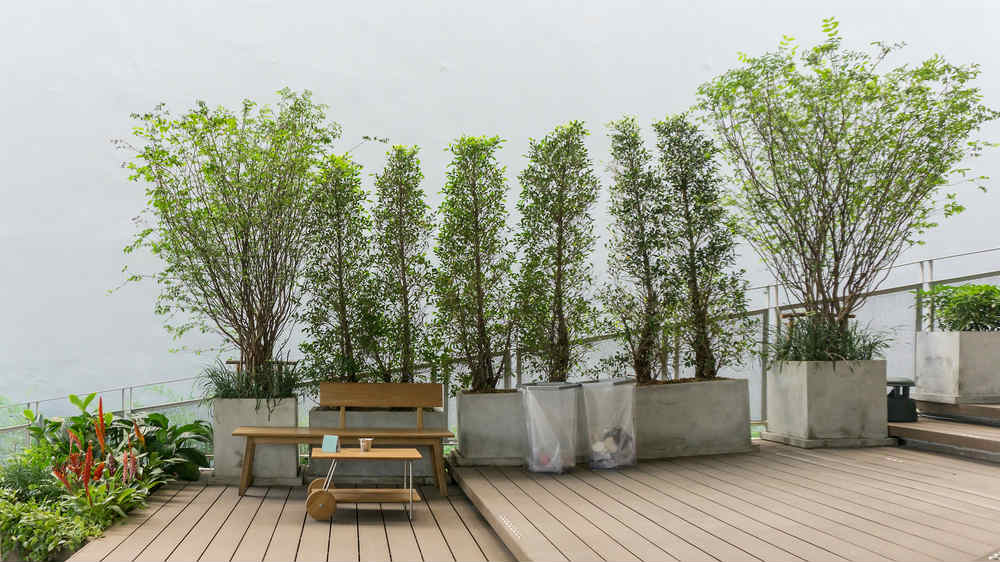
Sloping gardens provide a perfect spot for a decking area. Not only will these add a flat section to the garden, allowing you to plant more delicate flowers and shrubs, but they also provide some added space perfect for a seating area, summer house or BBQ terrace.
By creating a spot to sit and enjoy your garden with a deck design, you’ll gain a new vantage point, especially if yours is at the top of the slope!
If you need to add some steps to your decking, consider wider, longer ones to create the illusion of space among the greenery. It’ll also minimise the need for overly steep steps (something to consider if you have little ones running about, or elderly relatives coming to visit).
We recommend keeping planting simple and fuss-free, as maintenance at step-level can be a pain. Make sure you’ve got a spot to place your gardening gear, too!
Think about a retaining wall
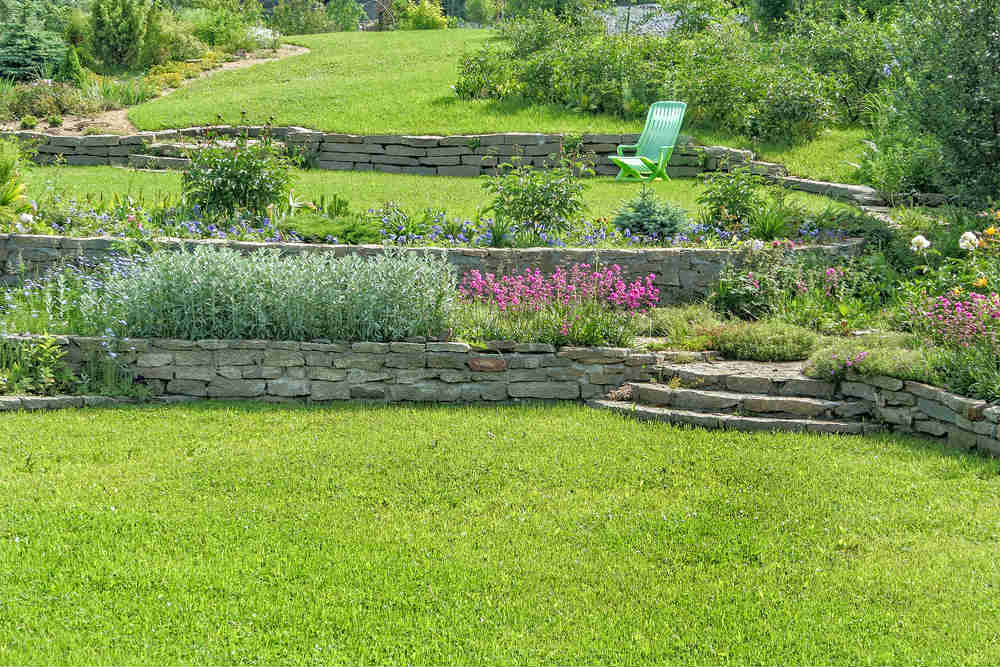
If your garden is on a particularly severe slope, add a retaining wall or two. This will help keep soil in place, and reduce the risk of dry or water-logged patches.
When designing your retaining wall, think safety first. The wall must be visible from several feet away to avoid any nasty accidents, and try not to make them too high off the ground if a trip or fall does occur. Instead, try adding a few low walls to provide an eye-catching landscape in the garden.
When choosing materials, go for something with a little grip. Things like gravel and sleek metals while stylish are a nightmare to look after on hilly terrain – they can be a nasty slip hazard too. There are some beautiful materials now available to choose from, such as railway sleepers, metal gridwork and even quarried stone.
Note: you may find you need specialist help from a structural engineer or landscaper for particularly steep areas – rails may need to be added to comply with UK health and safety regulation.
Add a water feature
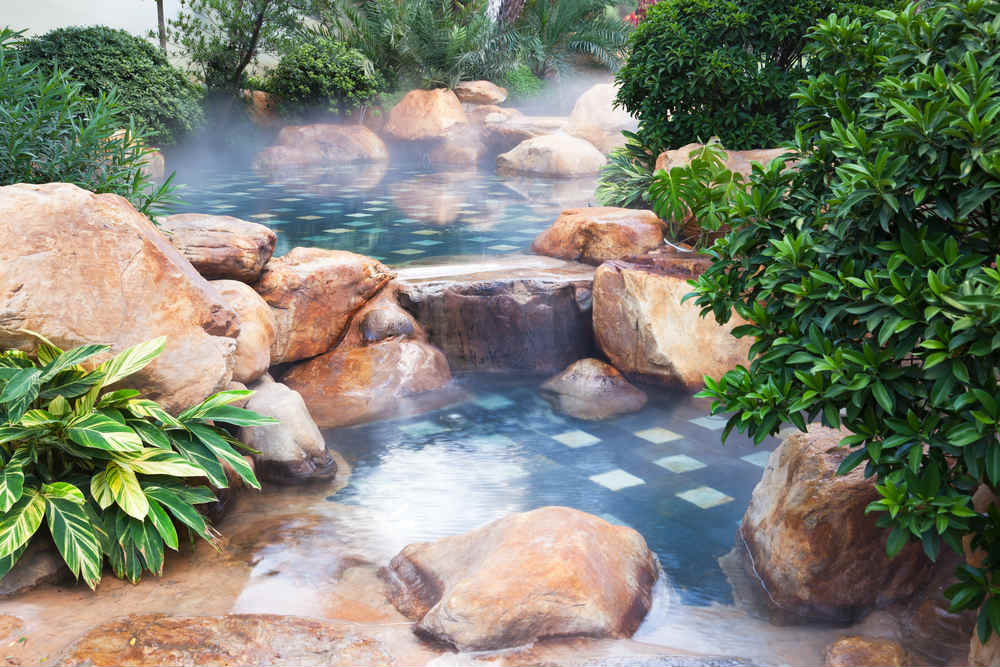
A sloping garden is the ideal terrain to add a water feature. The natural incline of the space will allow water to freely move from one place to another without the need to shift mountains of soil, providing an eye-catching feature for your outdoor space.
To ensure your new water feature blends seamlessly with your existing garden, choose local materials such as quarried stone and gravel. Soften the look by adding water-loving plants around the space.
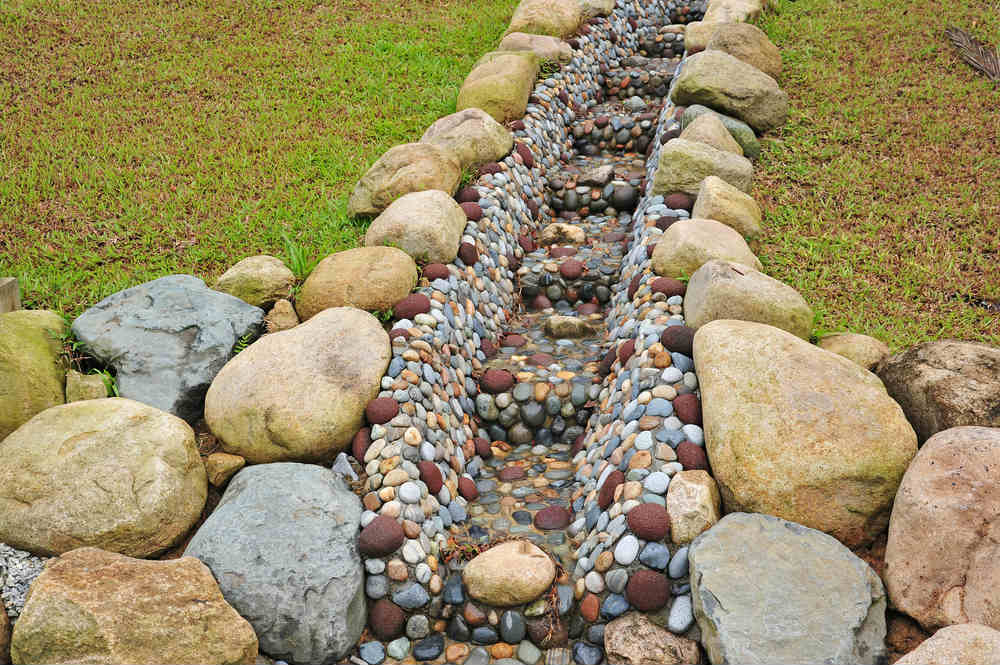
Maintaining the grass
If you plan to keep your garden as open-plan as possible (a great idea for those with kids), you’ll need to keep the grass cut. For gardens on a steep incline, a hover mower will make things a lot easier, instead of using a rotary one that will take a lot of strength to keep in place.
Garden drainage
As we stated earlier, drainage can be a real issue in sloping gardens. If you live in a particularly rainy area, you’ll need to pay close attention to avoid flower beds drowning in wet weather. This can be a serious consideration if the slope is steep and the base is near the house – a boggy, wet garden can lead to possible house flooding.
There are several ways to tackle the issue of drainage. If you have space, consider building a pond at the bottom of the slope where water can runoff.
Another idea would be to create a bog garden filled with plants that love these conditions.
If the water problem is becoming a real issue, consult a professional. They can design drainage channels to ensure water is safely taken away from the garden and the house, for added peace of mind.
To find out more about decks for sloped yards, contact us at ESB Flooring today.
| Mon-Fri | 8:00AM – 5:00PM |
| Saturday | 10:00AM – 4:00PM |
| Sunday | 11:00AM – 3:00PM |





.svg)
.svg)